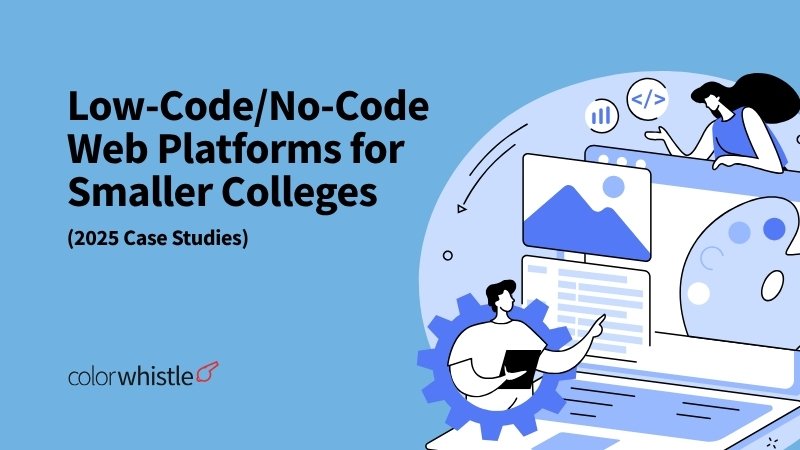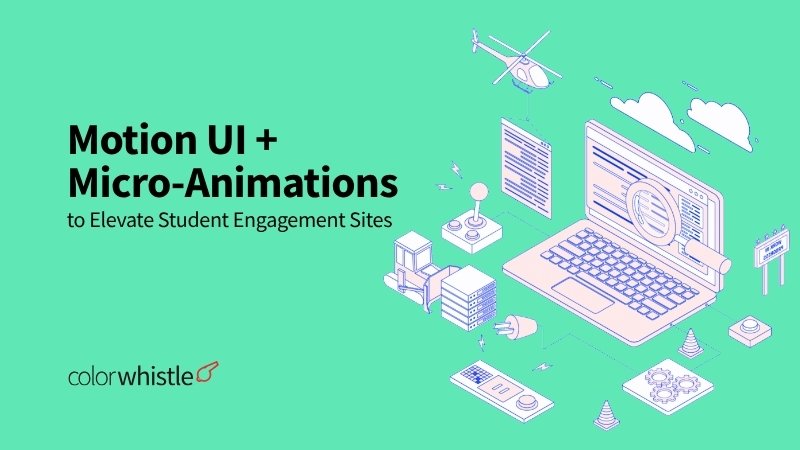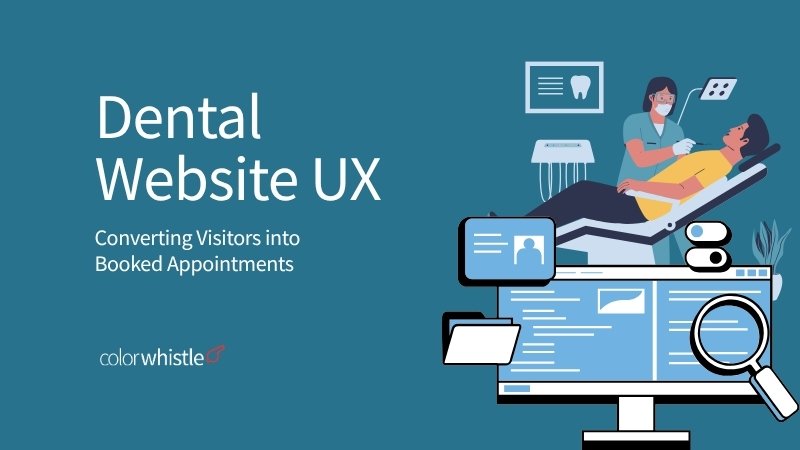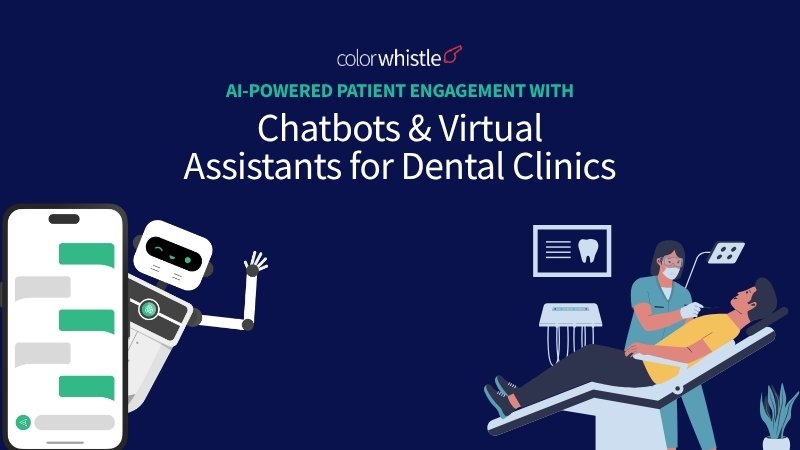Digital transformation is changing higher education, with smaller colleges facing unique challenges in updating their technology systems. Community colleges and liberal arts institutions often have limited budgets, making traditional software development methods too expensive. The rise of low-code no-code platforms offers a game-changing solution for these institutions looking to improve their EdTech operations without the large investment usually needed for custom development.
The UI / UX Future of Design in educational technology is becoming more accessible through platforms that allow non-technical staff to build complex web applications. These tools remove the usual obstacles between idea and execution, enabling administrative teams to quickly respond to student needs and institutional demands. For example, insights from the latest UI/UX trends can be used to enhance user experience in educational websites as well.
The Rise of Visual Development Environments
Projections for Web platforms 2025 suggest that visual development environments will become the norm for educational institutions seeking flexibility and cost-effectiveness. This change goes beyond just saving money. Low-code/no-code solutions empower colleges to:
- Reduce reliance on external development teams
- Speed up project timelines from months to weeks
- Enable iterative improvements based on real-time feedback
- Maintain competitive digital experiences despite limited resources
Moreover, these platforms could also provide valuable insights into Shopify store redesign, helping institutions that venture into e-learning or online course sales optimize their digital storefronts.
Ultimately, low-code/no-code web platforms have the potential to transform EdTech operations and improve UI/UX design in smaller institutions by 2025, creating opportunities for innovation that were previously accessible only to well-funded universities with dedicated IT departments.
The Rise of Low-Code/No-Code Platforms in Education
The educational technology landscape is experiencing a fundamental shift as institutions embrace low-code adoption at an unprecedented rate. Industry research indicates that 70% of organizations are projected to utilize low-code or no-code solutions by 2025, with higher education institutions leading this transformation. This surge represents a departure from traditional development approaches that have historically constrained smaller colleges due to resource limitations.
Key Growth Factors Shaping Educational Technology
The momentum behind no-code tools stems from several critical factors that directly address the operational challenges faced by educational institutions:
Faster Development Cycles: Traditional web development projects that previously required 6-12 months can now be completed in weeks, enabling institutions to respond rapidly to changing student needs and administrative requirements.
Less Dependence on IT: Administrative staff can now create and modify digital solutions without waiting for overburdened IT departments, creating a more agile operational environment.
Cost Optimization: Smaller colleges can allocate resources more effectively by reducing dependency on external development contractors and expensive custom coding projects. This is where the choice between remote staffing and outsourcing becomes crucial, as it can significantly influence budget management and project execution.
Educational Technology Trends in Community and Liberal Arts Colleges
Community colleges and smaller liberal arts institutions face unique operational pressures that make faster deployment capabilities particularly valuable. These institutions typically manage:
- Student enrollment systems requiring frequent updates during registration periods
- Event management platforms for campus activities and academic programs
- Alumni engagement portals that need regular content refreshes
- Faculty resource centers demanding quick implementation of new features
The ability to implement these solutions rapidly using low-code platforms, which offer numerous benefits, directly addresses the administrative burden that often overwhelms smaller IT teams. Staff members can now focus on strategic initiatives rather than maintaining legacy systems or managing lengthy development queues.
This technological democratization enables smaller colleges to compete more effectively with larger institutions by deploying sophisticated digital experiences without the traditional barriers of technical expertise or substantial development budgets.
Benefits for Smaller Colleges: Efficiency and Cost-Effectiveness
Cost-effective web design becomes a reality when smaller educational institutions leverage low-code/no-code platforms to address their digital transformation needs. These platforms deliver remarkable efficiency gains by reducing development time by up to 90% compared to traditional coding approaches. A project that previously required months of developer work, like a comprehensive student portal which typically takes around 6-12 months using traditional methods, can now be completed in weeks or even days with the low-code/no-code approach, allowing colleges to respond quickly to changing student needs and administrative requirements.
The financial implications extend beyond initial development costs. Traditional web development projects often require ongoing maintenance contracts with external developers, creating recurring expenses that strain already tight budgets. Low-code/no-code platforms shift this dynamic by enabling internal staff to handle routine updates and modifications without technical expertise.
Development Time Reduction Analysis
- Traditional development: 6-12 months for a comprehensive student portal
- Low-code/no-code approach: 2-6 weeks for equivalent functionality
- Resource allocation: Internal staff can focus on strategic initiatives rather than waiting for technical implementations
Long-Term Cost Comparison
The true value of budget-friendly solutions emerges when examining total cost of ownership over a three-year period:
External Developer Route:
Initial development: $50,000-$100,000
Annual maintenance: $15,000-$25,000
Emergency fixes: $5,000-$10,000 annually
Low-Code/No-Code Platform:
- Platform subscription: $3,000-$12,000 annually
- Training investment: $2,000-$5,000 (one-time)
- Internal staff time allocation: 10-15 hours monthly
The speed of deployment transforms how colleges approach digital projects. Iterative updates become seamless when administrative staff can modify forms, update content, and adjust workflows without submitting tickets to overwhelmed IT departments. This autonomy eliminates bottlenecks that previously delayed critical updates for weeks or months.
Administrative teams experience significant operational improvements when empowered with user-friendly platforms. Student services coordinators can update application processes in real-time, admissions staff can modify requirements based on changing policies, and academic departments can launch new program pages without waiting for developer availability. This independence creates a more responsive institutional environment where digital tools adapt to operational needs rather than constraining them.
The cumulative effect of these efficiency improvements extends beyond cost savings. Colleges can redirect their limited technical resources toward strategic initiatives while maintaining professional, functional websites that serve their communities effectively.
In this context, it’s crucial not to overlook the importance of SEO as part of the digital strategy. Implementing effective SEO strategies will ensure that the college’s website reaches its target audience effectively and efficiently. Moreover, embracing advanced technologies such as AI-driven CRM automation can further streamline operations and enhance customer management processes.
Tradeoffs: Customization vs Ease of Maintenance in Low-Code/No-Code Solutions
The appeal of low-code/no-code platforms lies in their promise of simplified development, yet this convenience comes with inherent customization limitations that smaller colleges must carefully evaluate. Visual drag-and-drop interfaces and pre-built templates excel at creating standard web experiences but struggle when institutions require unique functionality that extends beyond platform capabilities.
The Maintenance Simplicity Paradox
Ease of maintenance represents both the greatest strength and potential weakness of these platforms. While non-technical staff can update content and modify layouts without developer intervention, this accessibility creates boundaries around what’s possible. Colleges seeking distinctive branding elements, complex workflow automations, or specialized data visualizations often discover that their vision exceeds the platform’s template-based architecture.
Recognizing Scalability Constraints
Scalability constraints become apparent when institutions attempt to build sophisticated applications that serve multiple user types with varying permission levels. A simple faculty directory transforms into a complex challenge when requirements include:
Dynamic content filtering based on department hierarchies
Custom authentication integrating with existing campus systems
Advanced reporting dashboards pulling data from multiple sources
Mobile-responsive interfaces with platform-specific limitations
The UI/UX Future of Design Dilemma
The UI/UX Future of Design in educational technology demands platforms that can adapt to evolving user expectations while maintaining institutional consistency. Low-code solutions often lock colleges into predetermined design patterns that may not align with their brand identity or accessibility requirements.
Smart institutions approach this tradeoff by clearly defining their digital strategy before platform selection. Simple informational sites, basic forms, and standard content management tasks align perfectly with low-code capabilities. Complex student portals, integrated learning ecosystems, or data-heavy administrative tools may require hybrid approaches that combine low-code efficiency with custom development where limitations become constraints.
For instance, Mizzen+Main, a menswear brand, leveraged Shopify POS to seamlessly connect their online and offline stores. This example illustrates how strategic use of technology can enhance customer experience and business growth, a lesson that educational institutions could also benefit from by aligning their digital strategies accordingly.
The key lies in matching platform capabilities with realistic institutional needs rather than forcing complex requirements into simplified frameworks.
Integrating EdTech Systems Seamlessly with Low-Code/No-Code Platforms
Modern educational institutions rely on interconnected digital ecosystems that span multiple platforms and services. LMS integration stands as the cornerstone of any successful EdTech implementation, requiring low-code/no-code platforms to communicate effectively with Canvas, Blackboard, or Moodle systems. These integrations enable automatic grade synchronization, student enrollment updates, and seamless single sign-on experiences that eliminate friction for both faculty and students.
Overcoming Integration Challenges in Admissions
Admissions systems present unique integration challenges that low-code/no-code platforms must address through robust API connectivity. Prospective student data flows from inquiry forms through CRM systems to final enrollment records, requiring platforms to maintain data integrity across multiple touchpoints. Successful implementations allow admissions staff to track applicant progress, automate communication workflows, and generate real-time reporting without manual data entry.
Unlocking Insights through Analytics Integration
Analytics integration transforms raw institutional data into actionable insights through pre-built connectors and dashboard capabilities. Low-code/no-code platforms excel when they can aggregate information from:
Student information systems (SIS)
Financial aid databases
Library usage statistics
Campus facility management systems
Streamlining Workflows with Automation
Workflow automation becomes particularly powerful when these integrations work in harmony. A student’s course completion in the LMS can automatically trigger certificate generation, update transcript records, and send notification emails to relevant departments. This level of system orchestration reduces administrative burden while ensuring data consistency across the institution’s digital infrastructure.
The most effective low-code/no-code platforms provide pre-configured integration templates specifically designed for higher education environments, reducing implementation time while maintaining the flexibility to accommodate unique institutional requirements.
Enhancing User Experience through AI-Driven Features in Low-Code/No-Code EdTech Solutions
Modern AI-driven enhancements low-code no-code platforms education are changing how smaller colleges provide personalized student experiences without needing extensive technical expertise. These platforms now offer drag-and-drop AI components that administrative staff can directly implement into their educational workflows.
Intelligent Chatbots for Student Support
Low-code platforms like Microsoft Power Platform and Bubble enable colleges to deploy sophisticated chatbots that handle common student inquiries around the clock. These AI assistants can:
- Answer enrollment questions and guide prospective students through application processes
- Provide course information and academic calendar details
- Assist with financial aid queries and direct students to appropriate resources
- Offer technical support for learning management system access
Virtual Academic Advisors
Pre-built AI modules allow institutions to create virtual advisors that analyze student data and provide personalized recommendations. Community colleges using platforms like OutSystems have successfully implemented virtual advisors that track student progress and suggest relevant courses or support services based on academic performance patterns.
Automated Content Personalization
AI-powered content management features within these platforms can automatically adjust website content based on visitor behavior and preferences. For example, prospective students might see different program highlights based on their browsing history, while current students receive targeted announcements about relevant campus events.
Natural Language Processing for Form Assistance
Advanced low-code platforms incorporate NLP capabilities that help students complete complex forms by providing real-time guidance and error detection. This reduces administrative burden while improving completion rates for critical processes like course registration and financial aid applications.
These AI integrations require minimal technical configuration, allowing non-technical staff to enhance user experience through intuitive visual interfaces rather than complex coding requirements.
In addition to these features, the integration of metaverse technology is also making waves in the EdTech sector. This technology is not only enhancing learning experiences but also providing innovative teaching methods in K-12 education.
Moreover, the use of AI-driven marketing automation is revolutionizing how educational institutions engage with prospective students. By improving recruitment strategies, these automated systems are significantly boosting enrollment numbers.
Lastly, the rise of Flutter apps in the EdTech space cannot be overlooked. Known for their popularity among users, these apps offer customized solutions tailored to meet specific business needs, further enhancing user experience in educational settings.
Addressing Security Considerations for Non-Developer Teams Using Low-Code/No-Code Platforms in Education
When content managers and administrative staff take control of low-code/no-code platforms, educational institutions face unique security challenges that require proactive management strategies. The democratization of web development through these platforms creates potential vulnerabilities, particularly when handling sensitive student information protected under regulations like FERPA.
Critical Security Risks in Educational Low-Code/No-Code Environments:
Data exposure through misconfigured permissions – Non-technical users may inadvertently grant excessive access to student records or administrative systems
Weak authentication protocols – Default security settings often remain unchanged, creating entry points for unauthorized access
Unsecured integrations – Connecting third-party services without proper vetting can compromise institutional data integrity
Shadow IT proliferation – Staff members may implement unauthorized tools that bypass institutional security policies
Educational institutions must establish frameworks that balance accessibility with protection. This includes implementing role-based access controls that limit platform modifications to authorized personnel while maintaining audit trails for all system changes.
The future of design in educational technology depends heavily on maintaining user trust through robust security measures. Platforms should incorporate built-in security features such as automated vulnerability scanning, encrypted data transmission, and regular security updates that don’t require technical intervention.
Security governance becomes particularly crucial when non-developer teams manage student-facing applications. Institutions need clear protocols for data handling, regular security assessments, and incident response procedures tailored to low-code/no-code environments. These measures ensure that the convenience of visual development tools doesn’t compromise the institution’s responsibility to protect sensitive educational data.
Ensuring Compliance with Data Privacy Standards While Leveraging Low-Code/No-Code Solutions in Higher Education Institutions
Data protection compliance low-code no-code education requires institutions to implement robust governance frameworks that address regulatory requirements while maintaining platform accessibility. Educational institutions must navigate complex privacy landscapes, particularly when handling student records and personal information through simplified development platforms.
FERPA Compliance Framework
Higher education institutions must establish clear data handling protocols that align with the Family Educational Rights and Privacy Act. Key compliance measures include:
- Data classification systems that identify and categorize student information based on sensitivity levels
- Access control matrices defining which staff members can view, edit, or export specific data types
- Audit trail mechanisms that track all data interactions within low-code/no-code platforms
- Consent management workflows ensuring proper authorization for data collection and processing
GDPR Implementation Strategies
For institutions serving international students or operating in European markets, GDPR compliance becomes essential. Platform configurations should include:
Data minimization protocols limiting collection to necessary information only
Right to erasure capabilities enabling automated data deletion upon request
Privacy by design principles embedded within platform architecture
Data processing agreements with low-code/no-code platform vendors
Institutional Governance Protocols
Effective compliance requires structured oversight mechanisms. Institutions should establish data stewardship committees comprising IT security, legal affairs, and academic administration representatives. These committees develop platform-specific policies that address data retention schedules, cross-border data transfers, and incident response procedures.
Regular compliance audits help identify potential vulnerabilities in low-code/no-code implementations, ensuring platforms maintain regulatory alignment while supporting institutional objectives.
Empowering Non-Technical Staff through User Training Programs for Successful Adoption of Low-Code/No-Code EdTech Tools
The success of low-code/no-code EdTech tools depends on effective user training programs that turn administrative staff into skilled platform users. Smaller colleges need to invest in structured training initiatives that address the specific learning challenges of visual development interfaces and drag-and-drop features.
Key Areas of Focus in Content Management Training
Content management training should cover three important areas:
- Platform navigation and interface mastery – Teaching staff to navigate dashboards, understand component libraries, and effectively use pre-built templates
- Workflow automation basics – Enabling administrators to create simple automated processes for student communications, form submissions, and data routing
- Quality assurance protocols – Establishing testing procedures that non-technical staff can perform before making changes live
Empowering Administrative Staff through Hands-On Workshops
Administrative empowerment happens when training programs include practical workshops where staff members build real solutions for their departments. Marketing coordinators learn to create landing pages for recruitment campaigns using user-generated content for more impactful messaging, while student services personnel develop intake forms with conditional logic. This hands-on approach boosts confidence and shows immediate benefits.
Addressing Common Challenges Faced by Non-Technical Users
Training modules must tackle common challenges that non-technical users face, such as accidentally disrupting responsive design or creating accessibility barriers. Role-based training paths ensure that different staff members receive relevant instruction – admissions officers focus on form builders and CRM integrations, while communications teams concentrate on content publishing and social media connectors.
Creating Internal Support through Advanced Training Tracks
Establishing internal champions through advanced training tracks builds a support network within the institution. These power users become the first point of contact for troubleshooting and mentoring, reducing reliance on external technical support while preserving institutional knowledge. Regular refresher sessions and platform update briefings keep skills up-to-date as low-code/no-code EdTech tools continue to evolve.
Supporting Smooth Transitions with Effective Change Management Strategies During Implementation Phase of Low Code No Code Solutions In Higher Ed Institutions
Change management strategies implementation phase lower ed institutions require careful orchestration to prevent disruption of critical academic operations. Successful transitions begin with establishing clear communication channels between IT departments, administrative staff, and end-users throughout the deployment process.
Phased Implementation Approach
Educational institutions benefit from adopting a staged rollout methodology that minimizes operational risk:
Pilot programs with select departments to identify potential friction points
Gradual expansion to additional units based on initial feedback
Parallel system operation during transition periods to maintain continuity
Stakeholder Engagement Framework
Building consensus among diverse institutional stakeholders demands structured engagement protocols. Department heads, faculty members, and administrative personnel each bring unique perspectives that influence platform adoption success. Regular feedback sessions create opportunities for addressing concerns before they escalate into resistance.
UI/UX Future of Design Integration
Modern low-code platforms enable institutions to implement contemporary design principles without extensive technical expertise. Visual consistency across student portals, faculty dashboards, and administrative interfaces becomes achievable through standardized component libraries and design templates.
Managing Resistance and Building Momentum
Institutional culture often favors established processes, making technology adoption challenging. Identifying change champions within each department creates natural advocacy networks that accelerate acceptance. These individuals serve as peer mentors, demonstrating platform capabilities through real-world applications relevant to their colleagues’ daily responsibilities.
Documentation of quick wins and measurable improvements provides tangible evidence of platform value, reinforcing positive attitudes toward the new system while addressing skepticism through concrete results rather than theoretical benefits.
In a similar vein, the fashion industry has also embraced digital transformation, particularly through platforms like YouTube. Implementing lookbook video strategies on this platform can significantly boost a fashion brand’s visibility and sales. The success of such strategies lies in effective visual storytelling and SEO tips that ensure lasting video engagement.
Case Studies Highlighting Successful Implementations
The practical impact of low-code/no-code platforms becomes evident through real-world implementations that demonstrate measurable outcomes for educational institutions. These case studies successful implementations edtech solutions lower colleges provide concrete evidence of how smaller institutions can leverage these technologies to achieve significant operational improvements.
Schneider Electric’s Rapid Application Development Model
Schneider Electric’s approach to low-code application development offers valuable insights for educational institutions. The company successfully launched multiple applications within 6-8 weeks using low-code platforms, compared to traditional development cycles that typically span 6-12 months. When applied to educational settings, this model translates to:
Student portal development: Complete deployment in 4-6 weeks
Faculty resource management systems: Implementation within 2 months
Event registration platforms: Launch capability in 3-4 weeks
Community colleges adopting similar methodologies have reported deployment timelines reduced by 75% compared to custom development approaches.
Ricoh’s ROI Achievement Framework for Education
Ricoh’s documented return on investment achievements provide a blueprint for smaller colleges evaluating low-code solutions. Their implementation strategy yielded:
- 300% ROI within 18 months through reduced development costs
- 60% decrease in IT support tickets due to user-friendly interfaces
- 40% improvement in process efficiency across administrative functions
Liberal arts colleges implementing comparable frameworks have experienced:
- Reduced operational costs by $50,000-$100,000 annually
- Decreased dependency on external developers by 80%
- Improved staff productivity through self-service capabilities
Measurable Benefits in Educational Contexts
Real-world implementations at smaller institutions demonstrate quantifiable improvements:
Deployment Speed Metrics:
- Traditional web development: 4-8 months average
- Low-code implementation: 6-12 weeks average
- Time savings: 65-75% reduction in development cycles
Cost Impact Analysis:
External developer costs: $75,000-$150,000 per project
Low-code platform investment: $15,000-$30,000 annually
Net savings: $45,000-$120,000 per major application
These savings can be further amplified by leveraging the power of mobile technology. For instance, the development of Android and iOS apps using low-code platforms could significantly enhance student engagement and streamline various processes.
Operational Efficiency Gains:
- Administrative task automation: 50-70% time reduction
- Content update frequency: 300% increase in publishing speed
- User satisfaction scores: 25-40% improvement across platforms
These implementations showcase how smaller educational institutions can achieve enterprise-level functionality while maintaining budget constraints and resource limitations. The documented success patterns provide actionable frameworks for institutions considering similar technological transitions.
Preparing Smaller Colleges For The Future Of Digital Innovation With A Roadmap Towards Sustainable Growth Through Scalable Strategies
The future roadmap for digital innovation in smaller colleges requires strategic planning that balances immediate needs with long-term growth objectives. Educational institutions must develop comprehensive approaches that leverage low-code/no-code platforms while maintaining flexibility for future expansion.
Evolution of UI/UX Design in Educational Technology
Predictive trends, such as those outlined in the EdTech market trends for 2025, indicate that UI/UX design will become increasingly sophisticated through low-code/no-code platforms by 2025. These tools will incorporate:
- Adaptive interface design that automatically adjusts based on user behavior patterns, as explored in this study on personalized UI layout generation using deep learning
- Voice-activated navigation integrated seamlessly into existing educational workflows
- Personalized dashboard experiences tailored to different user roles (students, faculty, administrators)
- Mobile-first responsive design templates optimized for diverse device ecosystems
The democratization of design capabilities will enable non-technical staff to create intuitive user experiences without extensive training in traditional web development frameworks.
Identifying Growth Constraints and Platform Limitations
To ensure successful scalable strategies, institutions must account for potential bottlenecks that emerge as they expand their digital footprint. Key constraint areas include:
Performance Limitations
Database query optimization challenges when student populations exceed platform thresholds
Integration complexity increases exponentially with additional third-party systems
Custom functionality requirements that surpass platform capabilities
Licensing and Cost Escalation
- Per-user pricing models that become prohibitive during enrollment growth
- Feature limitations in lower-tier subscription plans
- Vendor lock-in scenarios that restrict migration flexibility
Building Sustainable Digital Infrastructure
Smaller colleges can establish resilient technology foundations through hybrid approaches that combine low-code/no-code solutions with traditional development practices. This strategy involves:
Phased Implementation Framework
- Foundation Phase: Deploy core administrative functions using no-code platforms
- Integration Phase: Connect existing systems through low-code middleware solutions
- Expansion Phase: Develop custom components for specialized requirements
- Optimization Phase: Refine performance and user experience based on usage analytics
As part of the resource allocation strategy, institutions should allocate 60% of their technology budget to proven low-code/no-code solutions while reserving 40% for custom development initiatives that address unique institutional needs.
Additionally, avoiding single-vendor dependency ensures sustainable growth by maintaining multiple platform options and preventing technology silos that could hinder future innovation initiatives.
Conclusion
Transformative web platforms are a game-changer for smaller colleges, allowing them to compete in an increasingly online world. By 2025, it will be crucial for these institutions to empower non-developers in order to survive and grow.
The cost-effective innovation potential of low-code CMS and no-code site builders creates unprecedented opportunities for community colleges and smaller liberal arts institutions to achieve operational efficiency gains previously reserved for well-funded universities. These platforms democratize web development, enabling administrative staff to create sophisticated digital experiences without extensive technical expertise.
The UI/UX Future of Design lies in accessible tools that bridge the gap between institutional vision and technical implementation. Smaller colleges can now iterate rapidly, respond to student needs dynamically, and maintain competitive digital presences without overwhelming their limited budgets or IT resources.
Next Steps for Implementation
- Evaluate current digital infrastructure and identify areas where low-code solutions could provide immediate impact
- Pilot small-scale projects with platforms like Webflow, Bubble, or WordPress builders
- Consider implementing a mobile-friendly travel website design as part of your digital strategy.
- Explore the possibility of creating a SaaS website to streamline operations and enhance user experience.
- Invest in staff training programs to maximize platform utilization
- Develop governance frameworks for security and compliance before full deployment
- Leverage the power of APIs by following this comprehensive API development guide which covers various API types, tools, and functions.
The path forward requires strategic thinking, but the tools exist today to transform how smaller institutions deliver digital experiences to their communities. It’s also essential to dispel common myths surrounding website design and development, as these misconceptions can hinder progress. Additionally, adopting effective education digital marketing strategies will play a crucial role in driving transformative growth in the education sector.
FAQs (Frequently Asked Questions)
What are low-code/no-code platforms and why are they important for smaller colleges in higher education?
Low-code/no-code platforms are web development tools that enable users to create and manage applications with minimal or no coding expertise. They are increasingly important for smaller colleges and community colleges with limited development budgets because they allow rapid deployment, cost-effective web design, and operational efficiency improvements in EdTech by 2025.
How do low-code/no-code platforms benefit EdTech operations in community colleges and smaller liberal arts institutions?
These platforms significantly reduce development time, by up to 90% compared to traditional methods, allowing faster iteration and updates without overwhelming IT teams. They offer budget-friendly solutions that empower administrative staff to independently manage content, enhancing operational efficiency and reducing reliance on external developers.
What are the tradeoffs between customization and ease of maintenance when using low-code/no-code solutions in educational settings?
While low-code/no-code platforms simplify maintenance and speed up deployment, they may have limitations in customization and scalability. Institutions need to balance the desire for tailored UI/UX designs with the platform’s constraints, especially when scaling complex applications beyond basic functionalities.
How can low-code/no-code platforms integrate seamlessly with existing EdTech systems like LMS and admissions software?
Effective low-code/no-code solutions offer compatibility with key educational systems such as Learning Management Systems (LMS), admissions platforms, analytics tools, and support workflow automation. Seamless integration ensures streamlined operations across different departments within smaller colleges.
What security considerations should non-developer teams keep in mind when managing low-code/no-code EdTech platforms?
Non-technical staff must follow security best practices to protect sensitive student data while managing these platforms. This includes adhering to data privacy standards like FERPA or GDPR, implementing access controls, regularly updating software components, and undergoing proper training to mitigate risks associated with non-expert platform management.
How can smaller colleges prepare their staff for successful adoption of low-code/no-code EdTech tools?
Providing comprehensive user training programs is essential to empower non-technical staff in content management and platform usage. Additionally, effective change management strategies during implementation help ensure smooth transitions, maximize tool adoption, and support sustainable digital innovation aligned with institutional growth goals.





